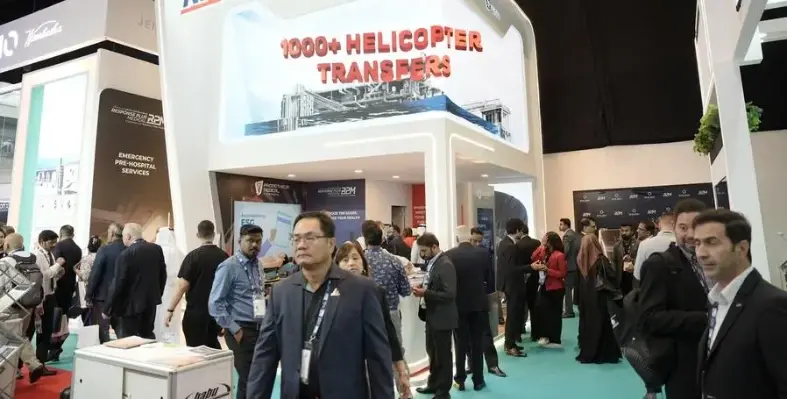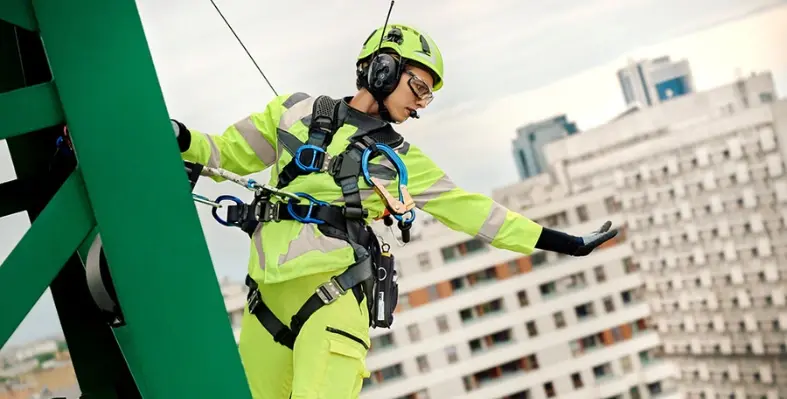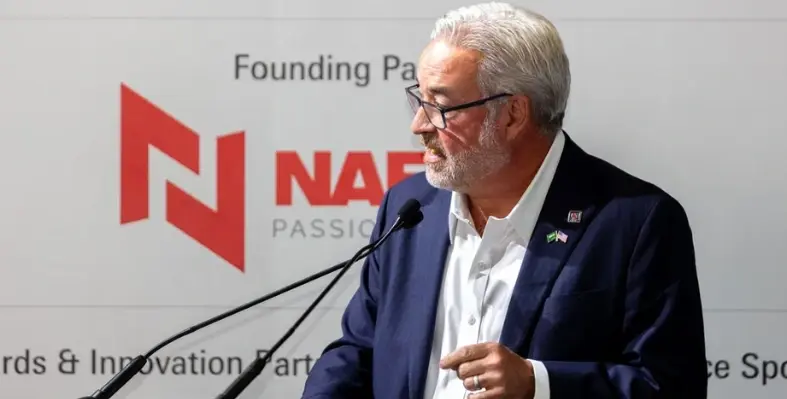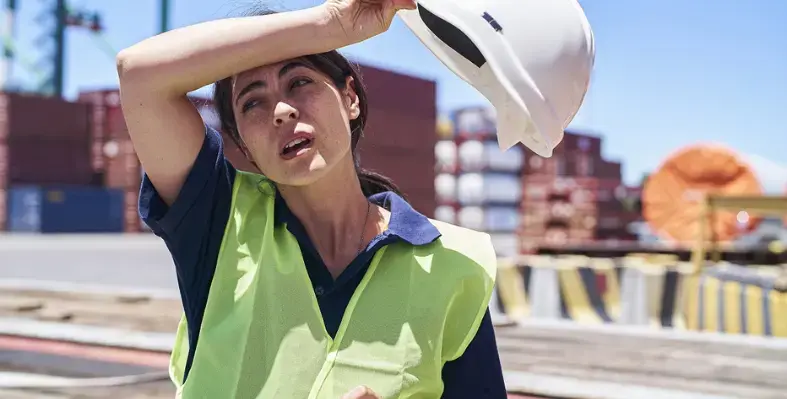Industrial Insights
Industrial Insights
- Details
- Sania Aziz
- Industrial Insights
- Date: 7 November, 2025
- Year: 2025
Twiceme has partnered with Simpson, the iconic American helmet brand, to bring its digital safety technology to the motorcycle industry for the first time.
Unveiled at EICMA 2025 in Milan, the inaugural Twiceme-equipped Simpson helmets introduce a new level of rider protection. Integrated NFC technology allows instant access to vital medical and emergency information for riders and first responders.
Through the Twiceme app, users can leverage smart safety features including Medical ID, Emergency Services, Share Location, Get Back Timer, and Immobility Alert, giving riders greater control over their safety.
“We’re very excited to bring this technology into our helmets and to the motorcycle industry. Just like our founder, Bill Simpson, we never want to rest on what we’ve done. Our goal is to keep evolving — to bring riders the latest innovations and deliver the safest equipment possible,” said Jamie Beckett, director of motorcycle, Simpson.
“Partnering with Simpson marks an exciting step for Twiceme as we enter the US motorcycle market for the first time. By combining Simpson’s decades of helmet innovation with our smart safety technology, we’re introducing a new standard of protection for one of the world’s most passionate riding communities,” said Christian Connolly, CEO, Twiceme.
- Details
- Sania Aziz
- Industrial Insights
- Date: 31 October, 2025
- Year: 2025
The global industrial safety helmets market, valued at US$4.83bn in 2024, is projected to reach approximately US$8.2bn by 2035, registering a compound annual growth rate (CAGR) of 4.9% between 2025 and 2035.
Historical trends from 2019 to 2023 reveal steady growth, driven by expanding construction activities, manufacturing output, and intensified efforts to reduce workplace injuries across developed and emerging economies.
Industrial safety helmets, once basic hardhats, have evolved into advanced protective systems designed to safeguard workers from head injuries in high-risk environments such as construction sites, factories, and mining operations. This evolution has been shaped by the adoption of global safety standards including those from the Occupational Safety and Health Administration (OSHA) and the International Organization for Standardization (ISO). As compliance requirements become more stringent, demand for certified, ergonomic, and durable helmets continues to grow across sectors.
A key driver of this market expansion is the heightened awareness of workplace safety and the economic importance of injury prevention. Governments, particularly in regions with industrial expansion, have intensified safety mandates requiring the use of personal protective equipment (PPE). This has led enterprises to invest in high-quality helmets that combine safety, comfort, and durability. Technological advancements have also played a crucial role, with manufacturers incorporating innovative materials such as fibreglass, carbon fibre, and high-density polyethylene to produce helmets that are lighter yet stronger.
Another emerging trend is the increasing investment in smart helmets equipped with integrated sensors, GPS tracking, and real-time communication tools. These features enable proactive monitoring of workers’ safety conditions, helping reduce accident risks and improving emergency response times. Such innovations are expected to significantly influence market dynamics over the next decade as industries shift towards digital and connected safety ecosystems.
Regional insights
Regionally, the industrial safety helmets market exhibits diverse patterns of growth. In North America, the market benefits from robust occupational safety regulations and early adoption of smart protective devices. Europe remains a hub for innovation, focusing on composite material technologies and sustainable production practices. Countries like Germany and the United Kingdom are leading exporters of advanced safety gear and continue to invest heavily in research and development.
The Asia-Pacific (APAC) region, however, represents the fastest-growing market. Massive urbanisation, large-scale construction projects, and rapid industrialisation in China, India, and Southeast Asia are fuelling unprecedented demand for protective equipment. Meanwhile, South America is witnessing a steady rise in safety gear adoption, supported by growing investments in the mining and infrastructure sectors.
In the Middle East and Africa (MEA), demand is being sustained by ongoing oil, gas, and construction projects across the Gulf Cooperation Council (GCC) nations and expanding industrial activity in African economies. As regional governments strengthen workplace safety legislation, helmet manufacturers are seizing opportunities to expand local partnerships and production facilities.
Overall, the industrial safety helmets market is entering a phase of technological innovation and regulatory maturity. With the convergence of digitalisation, sustainability, and safety compliance, the next decade will see a shift from traditional protective gear to intelligent, performance-optimised solutions that not only protect workers but also enhance operational efficiency across industries worldwide.
- Details
- Sania Aziz
- Industrial Insights
- Date: 30 October, 2025
- Year: 2025
The US$1mn Human Energy Health and Wellbeing Awards, which aim to acknowledge and celebrate innovative, measurable solutions that enhance the physical and mental health of energy workers worldwide, will take centre stage at ADIPEC 2025, taking place from 3-6 November in Abu Dhabi.
Reflecting the UAE’s ongoing efforts to promote innovation, wellbeing, and ESG excellence, the Human Energy Awards are closely aligned with the UAE’s National Strategy for Wellbeing 2031 and the ‘We the UAE 2031’ Vision, which positions the country as a global leader in quality of life by fostering healthy lifestyles and promoting mental wellness.
The award will honour one organisation in the energy sector during ADIPEC 2025, with entries reviewed by an international jury of distinguished experts.
Initiated by Response Plus Holding PJSC (RPM), the leading pre-hospital care and emergency medical services provider in the Middle East, and Burjeel Holdings, a leading super-speciality healthcare provider in MENA, and supported by Prometheus Medical International, a UK-based defence medicine training company, the awards are the first of their kind in the energy sector.
The awards form the centrepiece of RPM’s participation at ADIPEC this year, reinforcing its role as the preferred medical partner for the global energy industry and underscoring its commitment to advancing healthcare provision, innovation, and employee wellbeing across the energy value chain.
Additionally, RPM subsidiary Prometheus Medical International will launch a one-of-a-kind global medical and security assurance programme for VIP travellers during ADIPEC. Prometheus will also showcase its comprehensive Mental Health and Employee Wellbeing Programme, an initiative dedicated to promoting psychological safety, enhancing workforce productivity, and reducing turnover by embedding mental health support.
Dr Rohil Raghavan, CEO of Response Plus Holding PJSC, said, “Our participation at ADIPEC 2025 is a strategic step in our journey to transform health and wellbeing standards across the global energy sector. The US$1mn Human Energy Award is designed to recognise and inspire organisations who think differently about health and wellbeing. As the industry evolves, we are committed to delivering world-class medical services, AI-driven innovations, and mental health programmes that empower organisations to protect their most valuable asset – their people.”
During the exhibition, RPM will also showcase state-of-the-art artificial intelligence solutions designed to enhance occupational health services tailored specifically for the energy industry. These technologies aim to improve early detection, prevention, and management of health risks in high-demand work environments.
- Details
- Sania Aziz
- Industrial Insights
- Date: 29 October, 2025
- Year: 2025
Across industries worldwide, workers rely on the quality, fit, and performance of personal protective equipment (PPE) to stay safe on the job. Since hazards rarely occur in isolation, employees often need to wear multiple types of PPE simultaneously.
As a global leader in protective equipment, 3M continues to innovate solutions and will showcase its leading products at the A+A 2025 trade fair, taking place from 4-7 November in Düsseldorf.
According to 3M, the event allows it to demonstrate how its technologies and services work together to encourage consistent PPE use while addressing communication, comfort, fit, and performance needs.
Among the products on display are the 3M Speedglas Generation 5 Series Welding Helmet, offering advanced protection and customisable settings for versatile welders; the 3M PELTOR WS Alert XPV Headset, featuring solar-powered operation, Bluetooth MultiPoint technology, and noise-cancelling microphones for robust communication; the 3M DBI-SALA ExoFit XE Series Safety Harness, designed for comfort and safety at height; and the 3M Aura Particulate Respirator 9300+ Series, now upgraded with recycled materials and available in multiple protection levels.
3M also highlights its Integrated Protection Program, a holistic approach to PPE that combines technologies and services to promote consistent use and enhance worker safety. The programme underscores the value of PPE in protecting employees across industries, demonstrating how comprehensive health and safety strategies are strengthened through proper support resources.
Visitors to 3M’s booth will have the opportunity to engage with experts, explore interactive displays, and learn how selecting the right PPE for specific environments can improve workplace health and safety outcomes.
"At 3M, we are dedicated to advancing workplace safety through innovative solutions that enhance protection and productivity," said Aisha Barry, president, 3M’s Personal Safety Division. "At 3M, we’re changing the way we look at PPE and believe it works best when it works together, instead of getting in the worker’s way. Using PPE combinations that help enhance fit, comfort, communication, and productivity, it’s more likely that workers will embrace and wear their PPE all shift long.”
- Details
- Sania Aziz
- Industrial Insights
- Date: 27 October, 2025
- Year: 2025
Intersec Saudi Arabia hosted a key session that examined critical lessons from major fire disasters, including the Grenfell Tower fire in London, the Ghost Ship warehouse fire in Oakland, California, and the Marco Polo high-rise fire in Honolulu, Hawaii. The discussion underscored the urgent need for international collaboration to strengthen global fire safety frameworks.
The session was led by Jim Pauley, President and Chief Executive Officer of the National Fire Protection Association (NFPA), who emphasised that individuals, organisations and authorities must work collectively to address safety gaps and create more resilient communities.
In response to tragedies such as Grenfell, NFPA developed the ‘NFPA Fire and Life Safety Ecosystem’, a comprehensive model that identifies key components required for effective safety systems. These include an informed public, government responsibility, the use of current codes and referenced standards, investment in safety, a skilled workforce, code compliance, and preparedness and emergency response.
Explaining the concept, Pauley said, “The ecosystem is a framework that defines the elements necessary to create and maintain an effective safety environment. The interconnected components mean that the failure of a single element can compromise the entire system, resulting in deaths, injuries, and property loss.”
Established in 1896, NFPA is a global nonprofit organisation dedicated to reducing death, injury, and economic loss caused by fire, electrical and related hazards. The association delivers expertise through more than 300 consensus codes and standards, as well as through education, research, and advocacy.
“We live in an era of innovation, but innovation without safety is a risk we cannot afford. To do this work, and to do it well, we have to see what’s coming, and we have to remember what came before,” Pauley added.
He also linked the discussion to Saudi Vision 2030, describing it as “a bold and ambitious plan to transform the Kingdom's economy and to elevate its global stature.” He noted that achieving this vision required world-class infrastructure built on robust safety standards.
The NFPA day at Intersec Saudi Arabia, curated by NFPA and chaired by Zahi Daher, NFPA’s Country Manager in Saudi Arabia, brought together key stakeholders from government and industry to explore innovative ways to enhance fire and life safety in support of Vision 2030.
- Details
- Sania Aziz
- Industrial Insights
- Date: 24 October, 2025
- Year: 2025
The growing adoption of electric vehicles (EVs) and the associated fire risks were discussed at the Fire Protection & Technology Summit at Intersec Saudi Arabia by Mike Brunzell, Vice President of Global Business Development at the National Fire Protection Association (NFPA).
Research from the International Energy Agency (IEA) indicated that global EV sales surpassed 17 million in 2024, representing more than 20% of total vehicle sales. As EV adoption accelerated, new and complex fire risks emerged, particularly in densely populated areas such as residential and commercial parking facilities.
Brunzell explained, “One of the major concerns we face is the risk of thermal runaway in lithium-ion batteries. While the data shows us that EV fires occur less frequently than fires in gas or diesel-powered vehicles, the research also shows that when they do occur, they can present unique and difficult challenges including longer burn durations, high heat release, toxic gases, re-ignition risks and significant water demand for suppression.”
Through the NFPA’s Fire Protection Research Foundation, extensive studies had been conducted into vehicle fire dynamics, suppression methods and ventilation system design. The findings showed that modern vehicles contained a significantly higher percentage of plastic (rising from less than 3% of total vehicle weight in the 1970s to nearly 10% today) creating greater combustible fuel loads. The increasing use of electronic components and intricate wiring systems had also introduced additional ignition hazards.
Brunzell underscored the critical need for safety regulations to evolve alongside advancing technology. “It is through the development of our codes and standards, research initiatives and training programmes that NFPA is proactively working to provide the guidance and the resources needed by fire protection professionals, property owners and policymakers to ensure the integration of EV infrastructure safety strategies,” he said.
The discussion highlighted that as EV adoption continued to expand globally, updating fire protection measures, codes and emergency response strategies would remain essential to mitigating emerging risks in the electric mobility era.
- Details
- Sania Aziz
- Industrial Insights
- Date: 23 October, 2025
- Year: 2025
Two 102 sq m homes in Buena Vista, Colorado, were built using A1-rated 3D printed concrete walls that provided the highest level of fire resistance and did not fuel combustion at any stage. This marked a significant step forward in fire-safe construction, particularly in a state where nearly half the population lived in wildfire-prone regions.
The project showcased the advantages of COBOD’s open-source 3D printing technology, which allowed real concrete to be used and material mixes to be customised for local conditions. This adaptability made the structures more resilient to wildfires, seismic activity and extreme temperature fluctuations.
The superstructure of one home was completed in just 16 days, highlighting the remarkable speed and efficiency of automated 3D construction.
The printer followed a precise, predefined path, reducing manual labour and ensuring consistent quality. This rapid process saved weeks of traditional construction time and improved overall project cost efficiency. Known as the VeroVistas, the two homes demonstrated 3D printing’s flexibility in design, one retained the distinctive layered concrete aesthetic, while the other adopted a traditional stucco finish.
“In an era of fast housing, VeroTouch is creating legacy homes that can be passed down, rather than torn down,” said Grant Hamel, VeroTouch’s Chief Executive Officer. “Beyond merely great design, we’re proud that VeroVistas homes offer a level of resilience to natural disasters like wildfires unmatched by any other product in this region. Because of that, we expect these homes to be standing strong 100 years from now.”
Priced at about $625,000 (which is comparable to average homes in Colorado’s mountain communities) the 3D printed houses offered modern design, superior fire resilience and market competitiveness. VeroTouch collaborated with local contractors, supporting regional employment and introducing cutting-edge building methods. The company received support from Colorado’s Innovative Housing Incentive Program (IHIP), which aimed to facilitate construction of 7,500 homes within three years.
Governor Jared Polis stated, “We are proud to accelerate innovation in housing to better address Colorado’s housing needs. The unveiling of these 3D printed homes is a great example of how we can support new building methods to create more housing now.”
Following the project’s success, VeroTouch began work on a 32-home community in Salida, expanding its workforce to meet rising demand. “3D construction printing provides a safer, more efficient, and sustainable way to build,” said Philip Lund-Nielsen, Co-founder and Head of Americas at COBOD International. “Colorado investing in broader application of 3D construction printing shows that this scalable method can help address the housing crisis, not only in Colorado, but across the U.S.”
- Details
- Sania Aziz
- Industrial Insights
- Date: 22 October, 2025
- Year: 2025
AuCom is leading the way in the transition from fossil fuels to zero-emission heat generation.
The specialist in electronic drive solutions has developed the MV Heater Control, a powerful medium-voltage solid-state heating controller for industrial applications of up to 11 kV and 10 MW. AuCom will present the Heater Control Kit at ADIPEC in Abu Dhabi from 3–6 November 2025. Visitors to the world’s leading energy exhibition can find AuCom at stand 13393 in hall 13, where they will also see the H1 Series of variable speed drives and the energy-efficient MVH2.0 medium-voltage drive.
“Our drive solutions – and particularly the MV Heater Control – contribute to carbon free production,” said Thomas Zirk-Gunnemann, CEO of AuCom Applied Motor Controls. “We support the sustainable use of oil, gas and energy technologies for a clean and green future.”
The MV Heater Control offers significantly higher efficiency than conventional fossil-fuel heating systems or heat exchangers. Its fully integrated control solution ensures a high level of safety, minimising the risk of workplace incidents caused by hot oil, explosions or vapours. In addition, the system extends the lifespan of individual heating elements and reduces capital expenditure, as the advanced control system removes the need for step-down transformers. The innovative cooling system also allows for a compact, space-saving design.
Energy efficiency is central to AuCom’s wider product portfolio. The universally applicable H1 Series variable frequency drives (VFD) also feature a compact design. Covering a power range from 4 to 450 kW (380 to 460 V, 9 to 820 A), the H1 Series supports motor control types including SPM, IPM, SynRM and IM. For precise torque control and integration into higher-level control systems, the H1 drives offer multiple encoder cards, industrial application macros and a wide range of communication protocols such as CANopen, PROFIBUS-DP, PROFINET, Ethernet/IP and EtherCAT.
Both the H1 Series and the MVH2.0 medium-voltage drive set new benchmarks in energy-efficient drive technology with their energy-saving control solutions. The MVH2.0 provides extensive monitoring functions and, thanks to real-time data and cloud monitoring, is well suited to diverse and demanding industrial applications. Pre-installed standard functions, easy scalability and the ability to control multiple motors in parallel save both time and costs.
At ADIPEC, visitors will have the opportunity to explore AuCom’s innovative drive and control solutions and learn how the company supports manufacturers in their transformation towards sustainable and zero-emission production. The AuCom team looks forward to welcoming visitors and engaging in forward-looking discussions about the future of clean industrial energy.
- Details
- Sania Aziz
- Industrial Insights
- Date: 21 October, 2025
- Year: 2025
In our increasingly complex workplaces around the globe, the integration of artificial intelligence (AI) is proving to be a valuable ally in enhancing occupational health and safety (OHS).
Here are five ways AI is helping to protect workers and promote safer working environments:
Predictive analytics to anticipate hazards
Rather than simply reacting to accidents after they happen, AI systems can analyse vast datasets (such as incident logs, maintenance records or environmental readings) to identify patterns and predict potential risks. Research indicates that AI-driven technologies offer “predictive insights” which enable organisations to move from reactive to proactive safety strategies. For instance, in high-risk sectors such as construction or manufacturing, AI models may highlight equipment likely to fail or tasks that are statistically more accident-prone.
Real-time monitoring & computer vision for unsafe behaviour
AI-powered computer vision systems, often combined with wearable sensors or CCTV, can monitor workspaces for unsafe acts or conditions. As an example, some systems detect when a worker enters a restricted zone without appropriate personal protective equipment (PPE), or when machinery guards are missing. This enables rapid alerts so corrective action can be taken immediately, thereby reducing the window for harm. It also supports continuous, rather than intermittent, oversight of safety compliance.
Smart wearables and environmental sensors
AI is increasingly embedded in wearable devices and ambient sensors to monitor worker health and environmental conditions in real time. These might include monitoring of air quality (toxins, dust), temperature, humidity, or even biometrics of the worker (such as fatigue indicators). A recent review noted that “smart wearable devices … provide real-time risk detection or environmental sensors that track air quality”. In doing so, organisations can protect workers from exposure to harmful agents, heat stress, or other ergonomic and environmental hazards.
Automation and robotics to take humans out of harm’s way
One of the most direct applications of AI for OHS is the deployment of robots or automated systems to handle the “dirty, dangerous and demeaning” tasks thereby reducing human exposure to hazardous environments. For example, robots might handle heavy materials, work in extreme temperatures, or enter environments with toxic exposures. By combining robotics with AI control, organisations can reduce worker injuries while improving operational efficiency.
Enhanced training, risk communication and decision support
AI is also aiding the human side of safety. AI-driven systems can analyse inspection reports, maintenance logs and safety-audit data to flag systemic issues or emergent risks through natural language processing (NLP). Moreover, virtual reality (VR) or augmented reality (AR) training modules powered by AI can sensitise workers to hazards in immersive ways, improving their hazard recognition and safety behaviour. Effective risk communication, backed by AI analytics, helps safety professionals prioritise interventions and resources more efficiently.
Globally, AI is reshaping the landscape of occupational health and safety by making it more proactive, data-driven, and responsive. As noted by the International Labour Organization (ILO), it is not simply about new tools but about transforming how risks are identified, prevented and managed across industries.
That said, the empirical research base remains relatively modest and further study is needed to fully realise and validate these benefits. Organisations adopting AI in OHS must attend carefully to issues such as data quality, worker privacy, algorithmic bias, and the safe integration of automation into human workflows.
- Details
- Sania Aziz
- Industrial Insights
- Date: 20 October, 2025
- Year: 2025
The Saskatchewan government has launched a comprehensive review of its occupational health and safety regulations — the first major update since 2006 — to ensure workplace safety standards align with today’s evolving work environments.
Deputy Premier and Labour Relations and Workplace Safety Minister Jim Reiter emphasised that the review will help keep regulations relevant and reflective of modern needs. “We look forward to hearing insights from organisations and individuals,” he said.
The review responds to nearly two decades of workplace change, driven by technological advancements and shifting work practices. It also follows recent amendments to the occupational health and safety provisions of the Saskatchewan Employment Act, prompting regulatory updates for consistency.
The review will unfold in three phases, beginning with sections one to five of the Occupational Health and Safety Regulations, 2020. Stakeholders have until 30 November to submit feedback on these sections, which address notification requirements, youth employment, occupational health and safety programmes, accident investigations, and first aid provisions.
Among the key topics under consideration is the threshold for reporting serious injuries. Current regulations require a hospital stay of at least 72 hours for an injury to qualify as serious — a standard that may no longer reflect modern healthcare practices. Other areas of focus include youth employment protections, as workers under 25 accounted for 15% of accepted injury claims in 2024, with 2,689 cases reported to the Workers’ Compensation Board.
Additionally, the review will explore harmonising first aid requirements with other Canadian jurisdictions under the Canada Free Trade Agreement, updating harassment and violence provisions, and reassessing occupational health committee requirements for workplaces with 10 or more employees.
- Details
- Sania Aziz
- Industrial Insights
- Date: 17 October, 2025
- Year: 2025
As part of its participation at GITEX Global 2025, the Ministry of Human Resources and Emiratisation (MoHRE) unveiled its latest digital initiative, the Smart Safety Tracker, designed to enhance monitoring and enforcement of occupational health and safety standards in workplaces.
The project demonstrates the Ministry’s commitment to generative artificial intelligence (GenAI) solutions, aiming to modernise field inspection tools and advance intelligent regulatory oversight.
Her Excellency Shayma Yousef Alawadhi, Acting Undersecretary of Labour Market Development & Regulation and Assistant Undersecretary for Communications & International Relations at MoHRE, said, “The project embodies the Ministry’s drive to adopt cutting-edge AI technologies that enhance on-field supervision and streamline the monitoring and enforcement of occupational health and safety standards, in line with the UAE Government’s ambitious vision to lead in public service excellence and innovation through digital transformation and artificial intelligence.”
She added, “The project supports MoHRE’s strategic priorities of promoting worker wellbeing and happiness by fostering safe and healthy work environments, and reflects the Ministry’s broader goal of building a sustainable and human-centred labour market, where safety and well-being remain top priorities. This initiative marks an important step towards making workplaces across the UAE safer and more sustainable.”
AI usage
The Smart Safety Tracker uses GenAI and advanced computer vision technologies to automatically analyse field images and data, identifying violations and potential risks such as missing protective equipment, unsafe work practices, or hazardous material accumulation.
Deep Learning algorithms trained on thousands of real-world scenarios allow the system to detect unsafe patterns in real time, while GenAI generates intelligent reports detailing the type, location, severity, and recommended corrective actions for each violation.
This approach reduces the effort required from field inspectors, elevating inspection efficiency and enabling data-driven decisions that focus on analysis rather than routine tasks.
- Details
- Sania Aziz
- Industrial Insights
- Date: 16 October, 2025
- Year: 2025
The Big 5 Global exhibition and conference, taking place in Dubai from 24-27 November 2025, will once again gather key stakeholders from across the built environment to address the industry’s most pressing challenges and innovations.
Among the central discussions at this year’s event are two highly anticipated panel sessions that will delve into critical aspects of fire, life safety, and building standards shaping the region’s construction and HVACR sectors.
Fire safety
One of the headline sessions, titled Fire and life safety in HVACR: New mandates and technological developments, will focus on the evolving regulatory landscape in the GCC, particularly the updates to fire and life safety codes in the UAE, Saudi Arabia, and Qatar. The discussion will emphasise HVAC-related systems, including smoke control, fire-rated ductwork, and automated testing protocols, areas that have seen significant advancements in both regulation and technology. The panel will also explore how updates to US standards could influence the regional HVAC industry, reflecting the growing alignment between international and GCC safety frameworks.
Experts are expected to highlight the latest innovations in HVAC-related fire and life safety technologies, addressing how automation, smart monitoring, and integrated control systems are reshaping compliance and risk management strategies. The session will also examine compliance challenges specific to the GCC, such as balancing cost efficiency with the stringent demands of fire safety enforcement, while showcasing global best practices and future outlooks that could redefine regional standards in the coming years.
Building safety
Another key session, Benchmarking building safety: The role of SDOs in shaping regional standards and global alignment, will bring together leading representatives from some of the world’s foremost standards development organisations (SDOs). Moderated by Mohamed Amer, Managing Director – MENA at the International Code Council (ICC), the panel will include Engr Fouad Yazbeck, Global Cooperation Representative – MENA at ASTM International; Hassan Abou Jawhar, Director for Europe and the Middle East Regions at the Air Movement and Control Association (AMCA); Nabil Shahin, Managing Director of the Air-Conditioning, Heating, and Refrigeration Institute (AHRI); and Dr George Borlase, Senior Vice President at UL Standards & Engagement.
The session will explore how international and regional SDOs are collaborating to harmonise standards, streamline compliance, and promote safer, more sustainable building practices across the Middle East. By benchmarking building safety and fostering dialogue among global and regional experts, the discussion aims to ensure that construction in the GCC aligns with international benchmarks while reflecting the region’s unique climatic and regulatory requirements.












